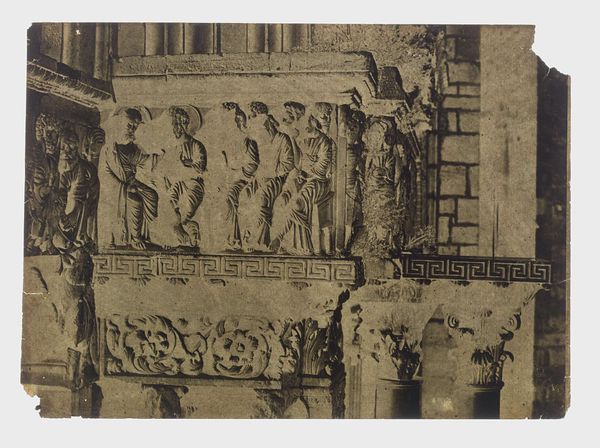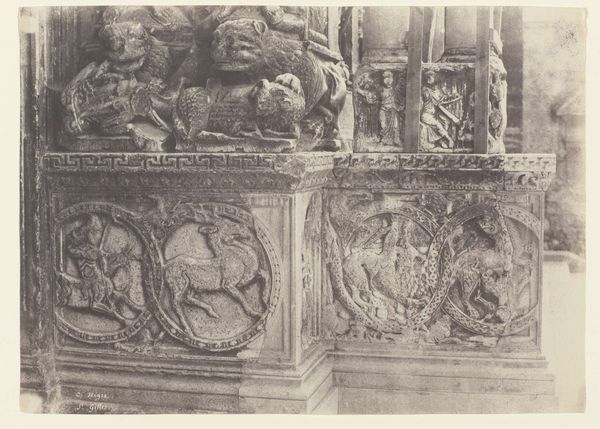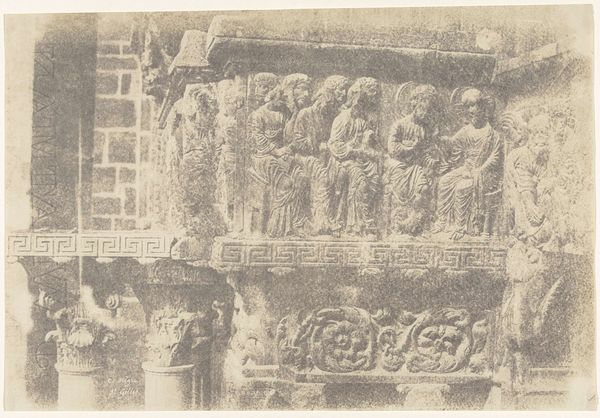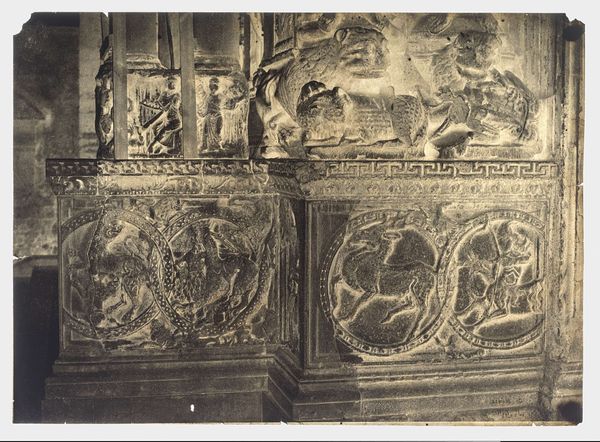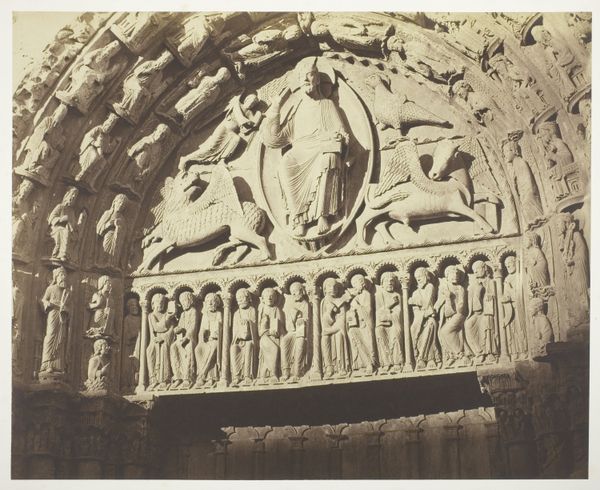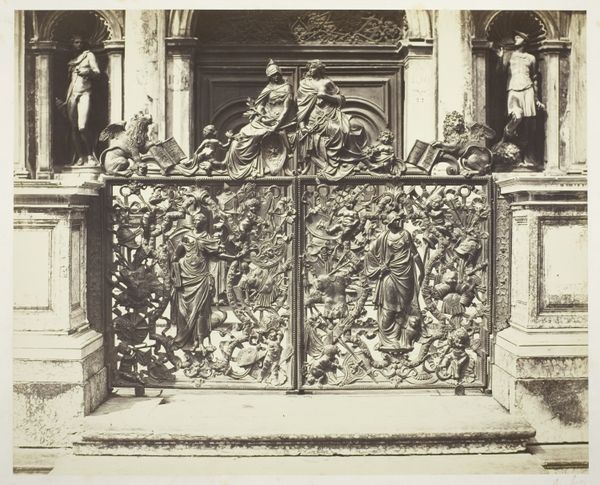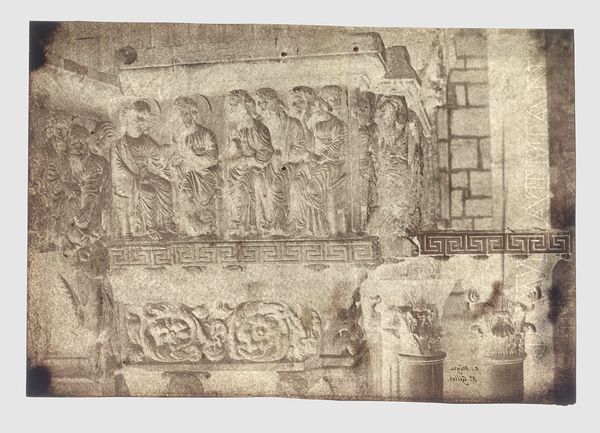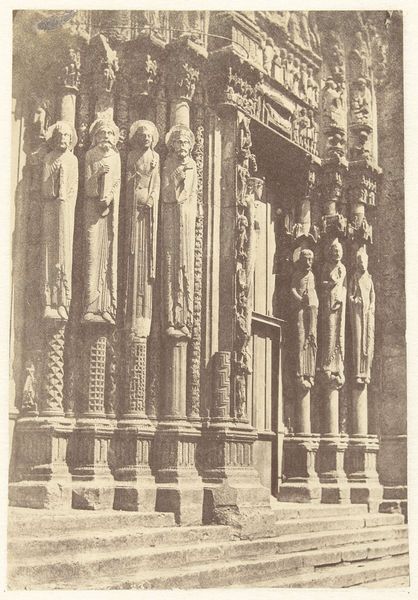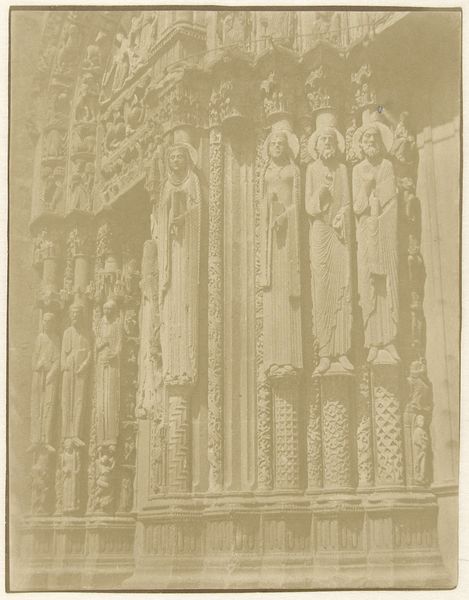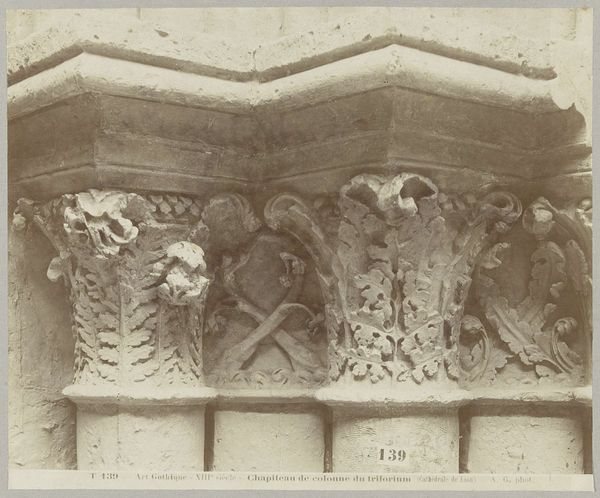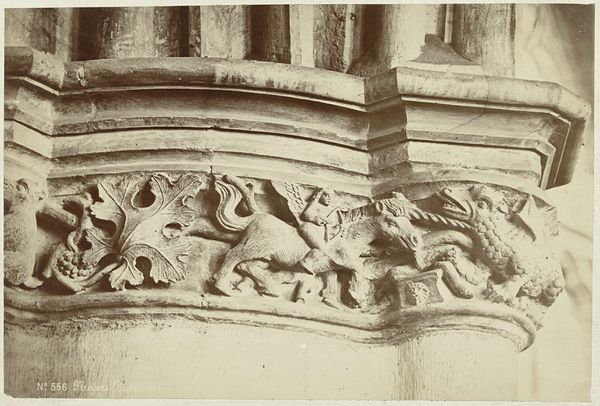
relief, photography, sculpture
#
greek-and-roman-art
#
relief
#
photography
#
ancient-mediterranean
#
sculpture
Dimensions: height 233 mm, width 328 mm
Copyright: Rijks Museum: Open Domain
Editor: So this is Charles Nègre's "Bas-relief aan de kerk van Saint-Gilles-du-Gard" from 1852, held here at the Rijksmuseum. It's a photograph of a relief, so it has this interesting layering of mediums. I'm really struck by how it captures a sense of ancient history. What do you see in this piece that speaks to you? Curator: Beyond the obvious classical references, I see Nègre engaging with questions of power and representation. The bas-relief itself likely depicts a procession, a display of social order, but who gets to be included in that narrative, and who is excluded? Editor: That's a great point. I was focusing so much on the style, I didn't consider the content as critically. So you are saying that it prompts questions about historical narratives of inclusion and exclusion? Curator: Precisely. Think about who commissioned the original relief. What message were they trying to send? And then, consider Nègre’s choice to photograph it, at a time of intense debate about the role of the Church, and the state’s increasing colonial power across the globe. It becomes an image layered with historical commentary. It asks: what is being memorialized, and for whom? Is it only for a certain class or a specific race? Editor: Wow, I hadn't considered the colonial aspect. Now, looking at it again, the figures almost seem burdened by the weight of history, trapped in this procession. Curator: Exactly! Photography at this time was about asserting a certain truth. The choice of this relief forces us to question that. Are we seeing the church how it wants to be seen? Or how it truly functions within systems of domination? Editor: This really changes how I see the piece. It’s not just a historical document but a critical engagement with power dynamics. I'll definitely need to spend more time reflecting on that relationship. Curator: And consider how photography itself—the act of capturing and framing—can perpetuate or challenge existing power structures. Editor: I appreciate your perspective on this image and will take it into consideration for other pieces I encounter in the future. Thank you.
Comments
No comments
Be the first to comment and join the conversation on the ultimate creative platform.
